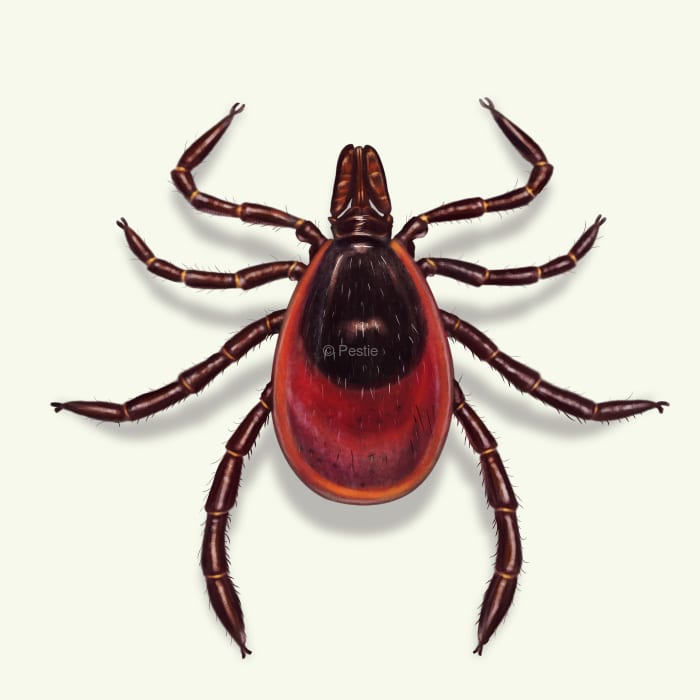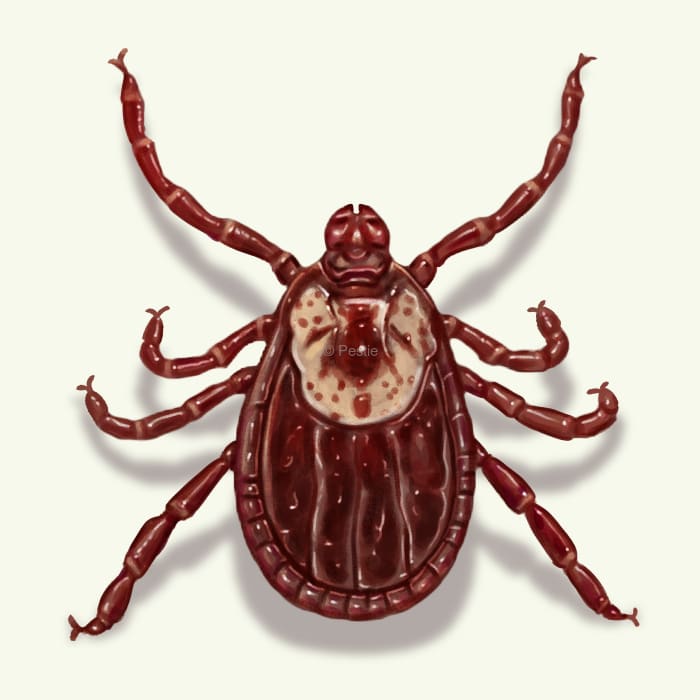How to identify and get rid of ticks
Tick Talk: how to spot and eliminate ticks
Outdoor activities shouldn’t threaten your health, but with ticks lurking in the tall grass, precautions are always necessary. Tick-borne diseases have increased in the last few years, and these tiny creatures could transform your whole life and health for the worse.
However, ticks shouldn’t keep you from enjoying what you love to do outside. With just a few safeguards, you can prevent ticks from making you their next meal.
These blood-sucking parasites are closely related to other arachnids like mites, scorpions and spiders. The larvae and adults both wait in tall grass or brushy areas, awaiting a passerby to brush up against them. They will climb to the tops of grass or brush and stretch out their forelegs while the other legs cling to the vegetation. It’s kind of like they are waiting for a hug, except you don’t want to be on the other end of that hug.
Ticks don’t jump, fly or drop down from trees to grab a host. The adults will usually climb higher than larvae, and so will most likely attach to larger hosts, like you and me!
Once they have found a suitable host, ticks will stealthily climb to a suitable place on the host. For us humans, this can be in our hair, under arms and legs, around the waist, or even behind our ears. After they settle in, they will cut a small hole into the skin of the host and insert their mouthparts to suck up blood. Their bodies can then fill with blood.
Both males and females will feed on blood. Males will only take a small amount of blood and don’t get swollen, whereas females can engorge themselves and swell to the size of a pea.
How to identify ticks
While certain ticks can be identified by their individual markings, all ticks share similar features, including:
- Eight legs
- 1/8 to ¼ inch long
- Flat oval body
- Protruding mouthparts
Over 90 species of ticks are found throughout the US. Here are a few medically-important ones:
Black-Legged Tick or Deer Tick (Ixodes scapularis)
Identification:
- Adults are approximately 1/8 inch long
- Dark brown to black body
- The female has a distinctive orange-red behind its back
- Very small, sometimes compared to the size of a sesame seed
Where it’s found:
Primarily in the northeastern, mid-Atlantic, and north-central United States.
Diseases Transmitted:
Lyme disease, anaplasmosis, babesiosis.
American Dog Tick (Dermacentor variabilis)
Identification:
Adults can grow up to about 3/16 inch long but become larger when engorged with blood. Brown with white or yellow markings.
Where it’s found:
Widely distributed east of the Rocky Mountains and also in limited areas on the Pacific Coast.
Diseases Transmitted:
Rocky Mountain spotted fever, tularemia.
Lone Star Tick (Amblyomma americanum)
Identification:
- Adults are about 1/8 inch long
- Reddish-brown body
- The female has a distinctive white dot or "lone star" on her back
Where it’s found:
Southeastern and eastern United States.
Diseases Transmitted:
Ehrlichiosis, Heartland virus disease, southern tick-associated rash illness (STARI).
Brown Dog Tick (Rhipicephalus sanguineus)
Identification:
- Adults are about 1/8 inch long but larger when engorged
- Reddish-brown and lack any easily distinguishable markings
Where it’s found:
Throughout the U.S., more common in warmer climates.
Diseases Transmitted:
Rocky Mountain spotted fever in some regions but is primarily a nuisance to dogs.
Fun fact
While there is nothing fun about ticks, it’s good fact to know that ticks require 24-48 hours of feeding before they transmit any infections into your bloodstream.
Are ticks dangerous?
Yes, ticks can be very dangerous if they bite you and aren’t promptly removed. Ticks can transmit several harmful diseases, including but not exclusively:
- Rocky Mountain spotted fever – Caused by the bacterium Rickettsia rickettsii. A rash is usually found on the wrists and ankles, which then spreads to the rest of the body. Other symptoms include, headache, fever, backache, and malaise.
- Lyme disease – Caused by the spirochete Borrelia burgdorferi. Symptoms include fever, headache, sore joints and nausea. Additionally, a red bump at the site of the bite can spread into a bullseye shape.
- Tularemia – Caused by the bacterium Francisella tularensis. This disease is spread by ticks that have had a blood meal from rabbits. Symptoms are often confused with the flu.
If you find a tick that has been attached to you or your family member for longer than 24 hours, pay close attention to the bite wound and contact a medical professional if they develop any symptoms.
How to get rid of ticks
Keeping ticks out of your home and yard can be a challenge, but there are ways to prevent them from making your grass their hunting territory, with you, your family, and pets as their main targets.
Here are a few tips to get rid of ticks in your yard:
- Cut your grass short and mow frequently
- Clear away any tall brush
- Add a wide space of mulch between lawns and wooded areas
- Keep leaves raked
- Remove trash or unused items from the yard
Wearing long pants and long sleeve shirts when walking through or working in tall vegetation can help prevent tick bites. Always check for ticks after a walk, just in case you have a hitch hiacker.
It's also important to protect our pets from ticks, especially during the spring and early summer when ticks are most active. A great way to protect our pets is to use a spray on repellency such as Pestie Flea & Tick Pet Treatment to ensure our pets stay protected from ticks.
Treat ticks with Pestie
If you're still having trouble keeping ticks away, the best option is to use a pro-grade, effective pest control solution like Pestie.
Pestie is a do-it-yourself pest control solution that's specially designed to keep ticks and other pests away from your home.
With Pestie, you can rest easy knowing that your living space is protected and free of creepy crawlies. And the best part? It's designed for people, pets, and the planet, so you can say goodbye to harsh chemicals and hello to peace of mind!
- Save hundreds compared to traditional annual pest plans
- People, pet, and planet-friendly
- Pro-grade customized formulas










